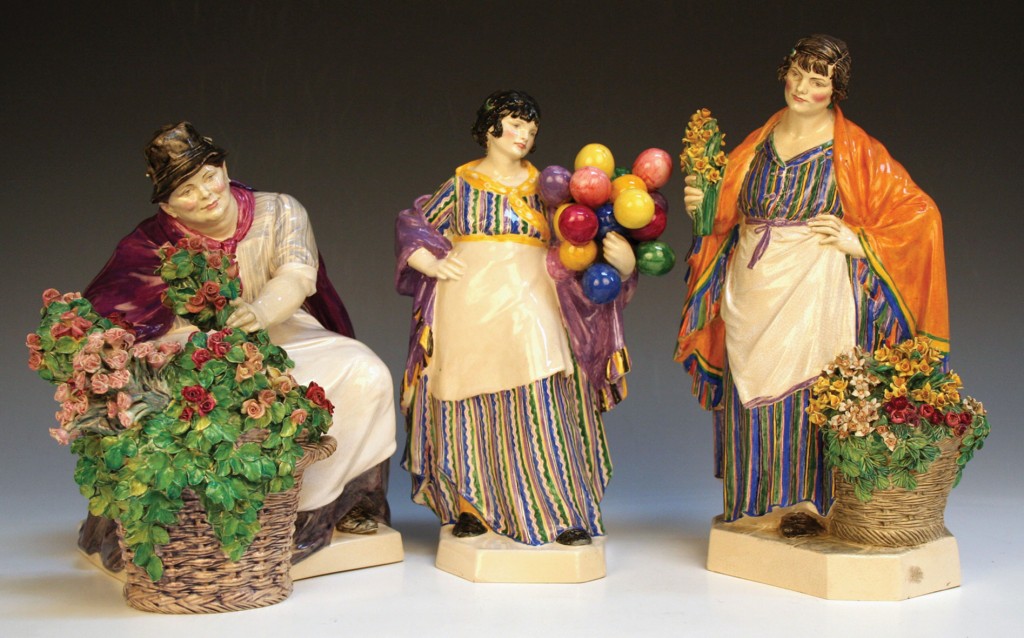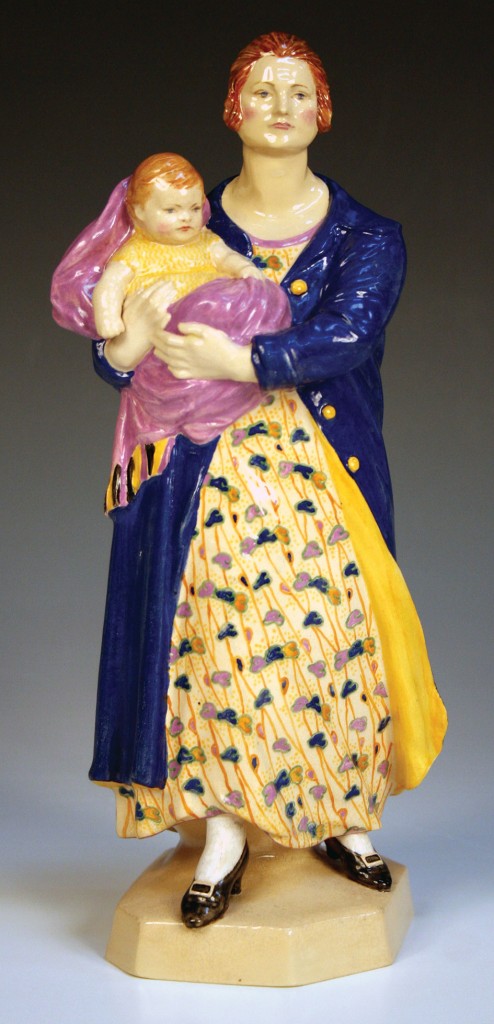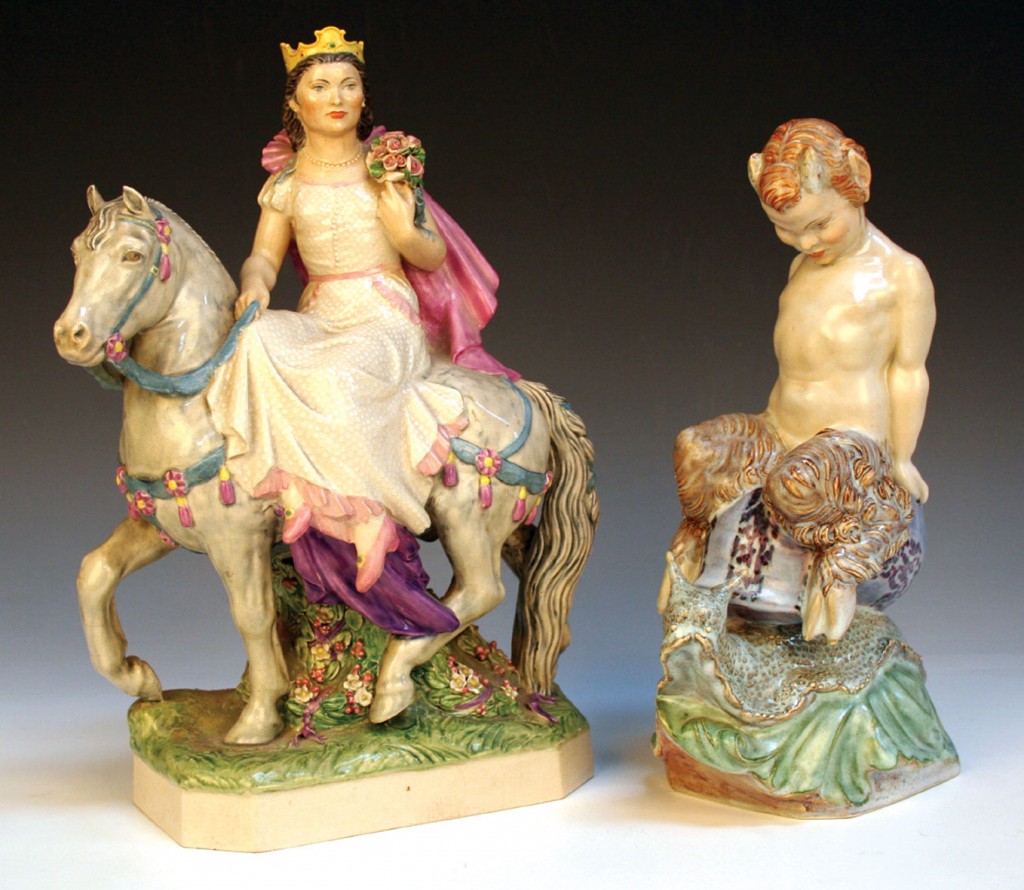
The rites of passage of our young people seem to have narrowed in recent decades, with an overemphasis on university education rather than discerning what an individual’s particular gifts are and how they might be best developed and valued. This was not the case for the studio potter and designer Charles Vyse and many of his contemporaries, who combined the utility of work with study. In 1896, at the age of fourteen, Charles Vyse was apprenticed to the Doulton factory at Burslem as a modeller and designer. He trained under Charles Noke and it is said that Henry Doulton noticed the young Vyse’s talents and encouraged him to attend Hanley Art School. A scholarship to the Royal College of Art to study sculpture followed and in 1909 a travelling scholarship enabled him to study in Italy. He was elected a member of the Royal Society of British Sculptors in 1911.
Between the wars Charles Vyse designed for Doulton. During this period his work included ‘Darling’, which has remained one of the factory’s most popular figures.
He became a studio potter and, although he produced some exceptional glazed wares based on Chinese pottery, he is best known for his clay figures modelled on vendors from the streets of London. The depiction of his subjects shows some influence from artists working at the Camberwell School of Art, where he studied in 1912. This very particular expression in his work is unusual for an artist working in the medium of ceramics.
In 1911 Charles Vyse married Nell. From 1919 until 1940, when their Cheyne Walk studio in Chelsea was bombed out, they worked together producing figures which combined Charles’ gift for sculpting with his knowledge of pottery manufacture. These figures are intricately made with extraordinary detail; they are fine art sculptures made in clay. Their production often involved forty or more individual moulds taken from Vyse’s original clay models. Nell Vyse became adept at painting them. Her colour schemes were carefully chosen and varied through the production run, giving each example of a particular figure a unique artisan quality. These figures were produced in small numbers.

Their first success was the figure ‘The Balloon Woman’, shown in the centre of the group of figures illustrated. It was produced in 1920. Here we see the quality of Charles Vyse the sculptor and modeller, combined with Nell’s sense of colour. The street vendor stands wearing a striped dress and purple shawl, her right hand on her hip and a bunch of brightly coloured balloons in her left arm. This is not just a figurine but a commentary on the society and times in which they lived. ‘The Piccadilly Rose Woman’ and ‘The Daffodil Woman’ on either side were both produced in 1922. The detailed modelling of the figures is beautiful and the subtlety of tone and colour of each hand-coloured flower illustrates Nell’s dedication and skill. There is an honesty and nobility in the depiction of these working-class women, whose faces clearly display pride as well as their cares and emotions.
‘The Madonna of World’s End Passage’ is a particular favourite of mine. The mother stares past the viewer, her thoughts set upon things beyond her immediate environment as she tenderly enfolds her child in her arms. Vyse sets this figure apart, gifting it with a sense of holiness lived out in the everyday.
Charles Vyse moved to Farnham after the Cheyne Walk studio was bombed and he and Nell separated. He continued to work with students from Farnham School of Art, where he taught. ‘The May Queen’ from 1949 and ‘The Morning Ride’ of 1925 illustrate the mythical subjects of some of his figures.
The art of sculpture is captured in clay by Charles Vyse, a quality not overlooked by collectors. Prices for Charles Vyse figures today vary from middle hundreds to low thousands, depending upon the complexity of the modelling, the quality of colour, the condition and subject. Work, study, experience and skill come together in this unique studio potter’s work, whose particular voice resonates with us today.

By Revd. Rupert Toovey. Originally published on 22nd January 2014 in the West Sussex Gazette.